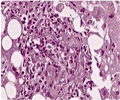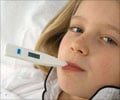The death toll due to the Japanese Encephalitis continues to daily kill a few more people in Uttar Pradesh and seems to be spreading to the neighboring areas like Nepal.

The first historic mention of Japanese encephalitis occurred during the “summer encephalitis” outbreaks in the late 1870’s. The virus was first isolated in Japan in 1935 from a fatal human case of encephalitis.
In 1940, JE was first identified in China. In 1954 the virus was recognized in India and a major epidemic occurred in 1978 with over 6,000 human cases occurring. Currently, the disease occurs in China, India, Nepal, the Philippines, Sri Lanka and Northern Thailand.
The geographical area affected by the virus has spread considerable over the last 50 years. Occasionally sporadic cases of disease occur in Indonesia and northern Australia. The disease has not occurred in the rest of the world. Postulated explanations include migration of birds, certain irrigation projects, animal smuggling and global warming.
Japanese Encephalitis is caused by a virus (Arbovirus). The life cycle of the virus involves mosquitoes and an amplifying host (also known as reservoir hosts). Known amplifying hosts include domestic pigs, wading bird species. Some of the incidental hosts include horses, donkeys, cattle, water buffalo, sheep, dogs, chickens, ducks and humans.
The disease is zoonotic disease, transmitted from animals to human beings. It is transmitted by mosquitoes, (Culex tritaeniorhynchus), the primary vector. In the endemic areas, only 2 to 3 % of mosquito’s carry the virus. With 50,000 cases reported annually and 10-15,000 deaths, it is the most common and the most severe form of viral encephalitis.
Diagnosis is based on tests of blood or spinal fluid. Treatment is largely on a conservative basis. Intravenous infusions may be given to maintain the hydration status of the patient. The main aim of therapy is to provide symptomatic relief to the patient.











